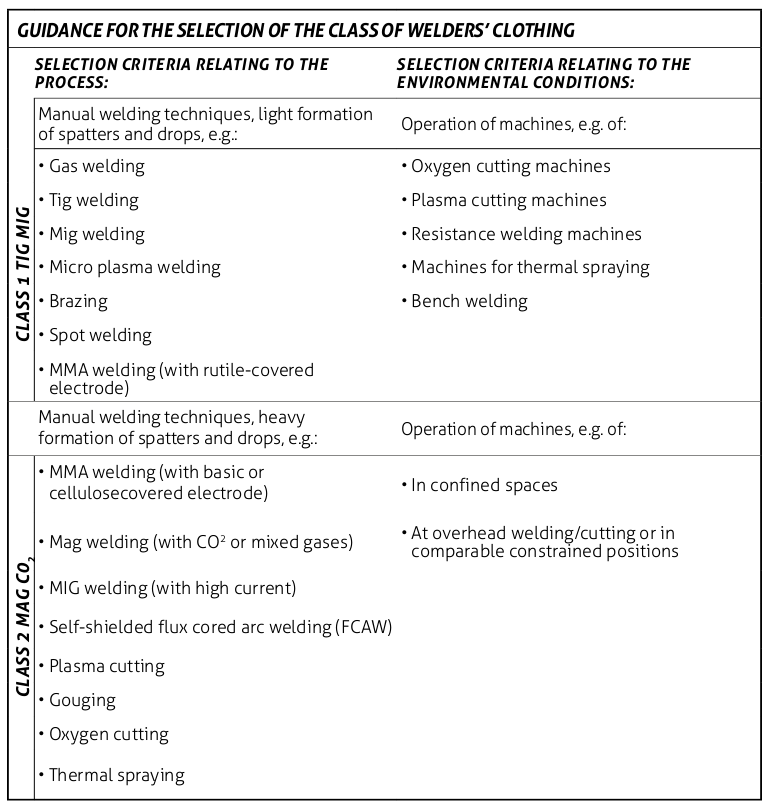EN ISO 11611
Welding

Protective clothing for use in welding and allied processes is certified according to EN ISO 11611.
Welding approved garments are always approved according to EN ISO 11612 (heat and flame). Two-piece protective clothing must be worn together and protect the entire body to achieve the right level of protection. The CE labels inside the garment contains information about the necessary garment combination and which code letters that the garment is certified for.
Welding garments have special design requirements to prevent welding sparks from sticking, e.g. no open or loose-hanging pockets. That means the material in a garment may be approved for welding but due to the design, the garment can’t be certified.
Arc welding involves a risk of exposing the skin to UV radiation. During usage, the material in the garment will be worn down and the protection impaired. If the user experience sunburn-like symptoms, it means UVB is penetrating. To increase the protection of the user and extend the durability of the garments we recommend supplementing the garments with a welding apron and welding sleeves. Welding garments are usually worn in combination with other PPE such as helmet and gloves.
For whom?
Welders, rail workers, miners, foundry workers.
Protects against:
Welding sparks (small splashes of molten metal), radiant heat, heat and flame.
The standard is divided into two classes with different levels of protection
The table provides guidance on which welding class your clothes need. The material must be able to withstand at least 15 drops of molten metal without exceeding an increase in temperature of 40°C on the reverse side of the material causing skin burns.
Class 1:
Provides protection for less hazardous welding methods and situations, with lower levels of splash and radiant heat. The material must withstand at least 15 drops of molten metal.
Class 2:
Provides protection for riskier welding methods and situations, with higher levels of splash and radiant heat. The material must withstand at least 25 drops of molten metal.
A1: Limited flame spread, surface ignition
A2: Limited flame spread, edge ignition.

